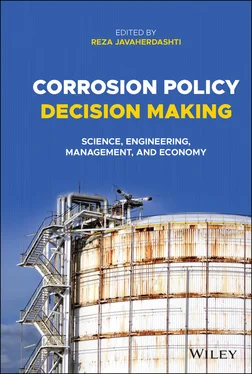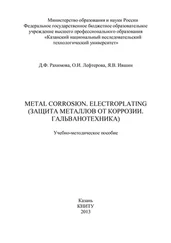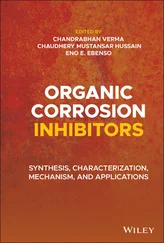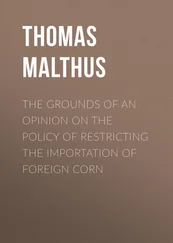Corrosion Policy Decision Making
Здесь есть возможность читать онлайн «Corrosion Policy Decision Making» — ознакомительный отрывок электронной книги совершенно бесплатно, а после прочтения отрывка купить полную версию. В некоторых случаях можно слушать аудио, скачать через торрент в формате fb2 и присутствует краткое содержание. Жанр: unrecognised, на английском языке. Описание произведения, (предисловие) а так же отзывы посетителей доступны на портале библиотеки ЛибКат.
- Название:Corrosion Policy Decision Making
- Автор:
- Жанр:
- Год:неизвестен
- ISBN:нет данных
- Рейтинг книги:4 / 5. Голосов: 1
-
Избранное:Добавить в избранное
- Отзывы:
-
Ваша оценка:
- 80
- 1
- 2
- 3
- 4
- 5
Corrosion Policy Decision Making: краткое содержание, описание и аннотация
Предлагаем к чтению аннотацию, описание, краткое содержание или предисловие (зависит от того, что написал сам автор книги «Corrosion Policy Decision Making»). Если вы не нашли необходимую информацию о книге — напишите в комментариях, мы постараемся отыскать её.
Explore the science, management, economy, ecology, and engineering of corrosion management and prevention Corrosion Policy Decision Making
Corrosion Policy Decision Making
Corrosion Policy Decision Making — читать онлайн ознакомительный отрывок
Ниже представлен текст книги, разбитый по страницам. Система сохранения места последней прочитанной страницы, позволяет с удобством читать онлайн бесплатно книгу «Corrosion Policy Decision Making», без необходимости каждый раз заново искать на чём Вы остановились. Поставьте закладку, и сможете в любой момент перейти на страницу, на которой закончили чтение.
Интервал:
Закладка:
The most common inhibitors of this category are silicates and phosphates.
Silicates and phosphates do not afford the degree of protection provided by anodic inhibitors such as chromates and nitrites, however, they are very useful in situations where non‐toxic additives are required.
Biocides are chemicals that can serve to kill bacteria and this terminology is used particularly to address the bacteria contributing to MIC reactions. Biocides can be divided into oxidizing and non‐oxidizing, depending on the detrimental mechanism and effects on the targeted bacteria. Important features of biocides [2] as well as pros and cons of frequently used biocides [3] have been reviewed elsewhere.
The main point about both corrosion inhibitors and biocides is that as they are both classified as chemicals, their entrance into the environment must be carefully assessed and monitored on a systematic basis [4].
2.2.3 Electrical Treatment
CP is based on reversing the anodic reaction(s) by returning the electrons liberated via anodic reactions back to the metal. This feature of CP can be schematically shown in Figure 2.7. As the figure shows, essential elements of CP are to control electron release via anodic reactions, that is via corrosion, are to be controlled by supplying electrons by either sacrificial anode CP technology or impressed current CP. It is possible to also mix the two methods to make the electron pool available to the object to be protected even more powerful. In addition, based on Pourbaix diagrams, CP “pulls down” the corrosion potential toward more negative potentials, thus bringing the whole reaction to where the atom of the metal remains an atom and not an ion. This way, CP also serves to protect the metal against corrosion.
CP, like any other technology, has its own advantages and disadvantages. The list of these advantages and disadvantages can be too lengthy and we see no need to mention them here. However it is important to note that installing CP systems near metallic objects (above ground or underground) without applying required insulation as well not considering telluric effects on CP systems may actually decrease the workability of such systems. In addition, based on the locations these systems are installed, vandalization may also prove to be a serious matter.
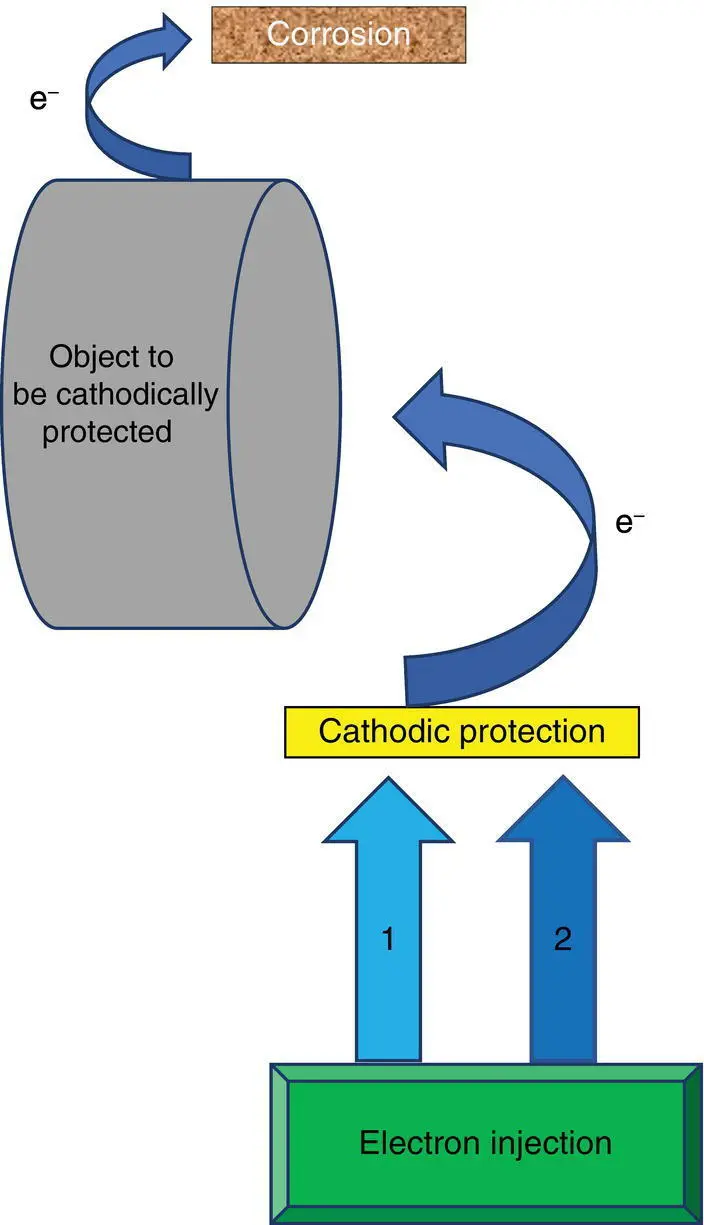
Figure 2.7 Conceptualization of the elements of cathodic protection (CP); 1: Sacrificial anode‐galvanic CP, 2: Impressed current CP.
2.2.4 Mechanical Treatment
PIG stands for Pipeline Inspection Gauge. Pigging is the act of running a PIG through a pipeline. The main aim of pigging from a CM point of view is not treating corrosion but somehow decreasing the likelihood of corrosion. Debris and scales formed within a pipeline are capable of facilitating the establishment of spots with differences in local partial oxygen pressure or concentration of chemical species. The former forms differential aeration electrochemical cells and the latter serve to form differential concentration electrochemical cells. In both cases, electrochemistry under the deposits will be highly likely to be leading to corrosion. Also, if temenos [5] (see footnote 1 in this chapter) forms, the corrosion products along with the temenos pieces can form deposits that would enhance the corrosive effects [6] of the deposits formed in this regards. This is when use of under‐deposit corrosion will make sense. Pigging will damage and destroy these deposits and scales and thus will decrease the likelihood of under‐deposit corrosion, by which these corrosion mechanisms may do detrimental effects on the mechanical integrity of the pipe.
Any action that will intervene with formation of deposits and establishing electrochemical cells by mechanical action can be grouped in this category. The deposits can be formed on the exterior of the asset, thus leading to external corrosion, or within the asset resulting in internal corrosion. Borrowing the terminology we have used in Chapter 3to distinguish between corrosion control and corrosion prevention, mechanical measures can mostly be referred to as technologies to prevent corrosion by lowering the possibility of under‐deposit corrosion in the way we previously addressed.
2.2.5 Physical Treatment
2.2.5.1 Paints, Coating Systems, and Premature Destruction in Industrial Facilities
Paints are very important in CM and its economy due to their high cost. Defects of paint and coating are inevitable. The users are trying to get optimal, long service time for paint systems.
During construction of refineries and industrial complexes, painting of structures and equipment programs is one of the last stages before getting started and commissioning. Managers and workers have a strong wish to get the job done, so painting teams, including contractors, inspectors, executors, and technicians, are under double pressure to complete the job.
Being in hurry leads to neglect of many standard considerations, and the results shorten the life of the paints and lead to their failure. The author and colleagues monitored seven petrochemical centers, two oil refineries, two oil offshore docks, and four gas refineries periodically during four years with emphasis on studying paint damages. Paint problems and solutions are reviewed in this chapter.
Type and size of the abrasive particle are important due to speed of work. Less attention to them may result low surface roughness, sand dirt, and surface contamination due to performing several operations simultaneously. In addition, many other factors contribute to the weakness of the surface preparation and that is one of the main causes of weakness in paints. Collecting atmospheric corrosion data and choosing the right coating system based on corrosion parameters is very important. It also helps in deciding the right time for the painting program.
Proper application of multi‐layered paint systems, consideration the curing times and interlayer times, and observance of the weight balances of paint components and the skill of workers and technicians have led to successive results of long life paints and coating in many industrial projects.
Paint quality control tests almost always need a long duration time. However, managers and executives are in a hurry to start the operation of the units, and this sometimes leads to ignoring some necessary tests, and ultimately leads to using weak paints.
Defects of the paints often appear after the beginning of service. Several field variables play a role in coating defects, and these factors can work separately or intensify each other.
2.2.5.2 Features of Substrate
The material of substrate and shape of a surface are effective limits to useful life of coating and paint systems [7]. In industrial facilities, some base metals and sub‐surfaces include; steel, stainless steel, cast iron, galvanized steel, aluminum, zinc, copper, concrete, etc. The corrosion mechanisms of these substrates are various and each requires a different method of surface preparation before application of the coatings [7]. Stainless steel, zinc, and aluminum corrode slowly under the atmospheric condition [8].
Steel has a dense and smooth surface. It also has a high chemical reactivity with the atmosphere and pollutants. Therefore, complete de‐rusting along with enough roughness are necessary in surface preparation.
Stainless steel 304 has 18–20% chromium by weight [8]. It has a much harder surface under normal atmospheric conditions than carbon steel, is smoother and denser, and is more resistant to corrosion under normal atmospheric conditions. It has many applications in atmospheric environments. Stainless steel strikes the rust point in an atmosphere containing chlorine and sulfur, however, it is more difficult for the coating to adhere to it. It is therefore recommended that you perform a weak and suitable acid wash on the surface of stainless steel before sand blasting, for proper adhesion of the primer [7].
Читать дальшеИнтервал:
Закладка:
Похожие книги на «Corrosion Policy Decision Making»
Представляем Вашему вниманию похожие книги на «Corrosion Policy Decision Making» списком для выбора. Мы отобрали схожую по названию и смыслу литературу в надежде предоставить читателям больше вариантов отыскать новые, интересные, ещё непрочитанные произведения.
Обсуждение, отзывы о книге «Corrosion Policy Decision Making» и просто собственные мнения читателей. Оставьте ваши комментарии, напишите, что Вы думаете о произведении, его смысле или главных героях. Укажите что конкретно понравилось, а что нет, и почему Вы так считаете.
